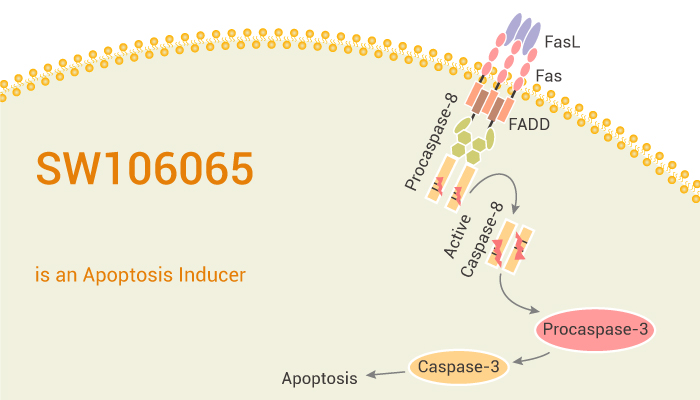SW106065 inhibits the growth of all available in vitro models of malignant peripheral nerve sheath tumors and human MPNST cell lines while remaining non-toxic to normally-dividing Schwann cells or mouse embryonic fibroblasts. In addition, SW106065 delays the cell cycle and leads to cellular apoptosis. Moreover, SW106065 can reduce the MPNST burden in a mouse allograft model, underscoring the compound’s potential as a novel chemotherapeutic agent.

SW106065 induces apoptosis in all models of malignant peripheral nerve sheath tumors tested but spares normal cells and tissues. SW106065 inhibits ATP consumption of malignant peripheral nerve sheath tumors and all other models of malignant peripheral nerve sheath tumors tested with an EC50 of 1 µM. The EC50s are 439.0 and 753.6 nM for human malignant peripheral nerve sheath tumor cell lines, S462 and SNF96.2, respectively. In contrast, NIH3T3 cells and wildtype Schwann cells show a considerably higher dose of resistance.
SW106065 inhibits colony formation in anchorage-independent soft agar growth assays. Thus SW106065 has general toxic activity on Nf1 and p53 deficient malignant peripheral nerve sheath tumors cells but not on diverse non-tumorigenic, mitotically active fibroblasts or Schwann cells. SW106065 induces mitotic arrest of malignant peripheral nerve sheath tumor cells that ultimately results in cellular apoptosis. This phenotype is not observed in untransformed dividing cells. The inhibition of the PI3K pathway combined with SW106065 treatment results in a decrease in cellular growth. Furthermore, survival is greater than either inhibitor alone.
To summarise, SW106065 acts as a potent pharmacological inducer of apoptosis in malignant peripheral nerve sheath tumors.